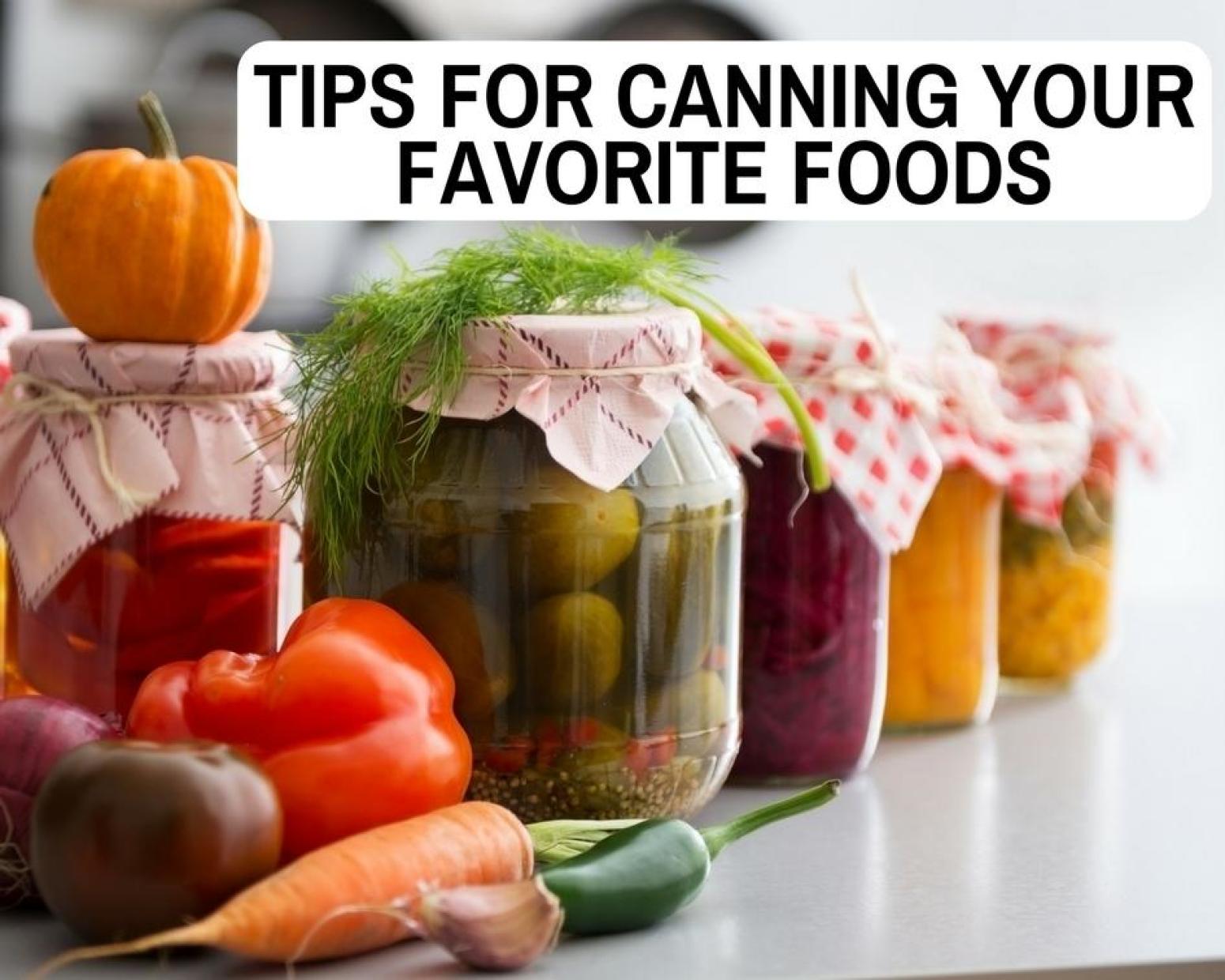Spring and summer bring a bounty of garden produce that we want to enjoy all year long. The following methods and tips will help you preserve your favorite foods!
Water Bath Canning
This method is quicker and uses a lower temperature than pressure canning. This method should only be used for foods with high acid contents. It is best to follow the recipe precisely to ensure that you do not alter the acid content in a way that might make the canned food unsafe.
You also need to be sure to cover the jars with 1-2 inches of water. Not adding enough water could result in uneven heating which causes hazardous contents. In addition to the heat, the acid is necessary to kill the bacteria and therefore preserve the food.
Keep in mind that if you aren’t using a separate water bath canning, you need to ensure your stove is safe for the canning process. Some glass top stoves are not safe for the process of canning. If it isn’t safe for the canning process, specific equipment will be required such as a pot with a smooth bottom. Refer to the manufacturer of your stovetop for more details.
You can use the water bath canning method for the following foods:
- Fruits and fruit juice
- Jams/jellies
- Salsa
- Tomatoes (with added acid)
- Pickles
- Some chutneys
- Vinegars
- Some condiments
Pressure Canning
Pressure canning uses a temperate of 240F to kill bacteria and prevent pathogen growth. This method can be utilized for just about everything else you want to preserve. Processing takes a lot longer; the food cooks in the jars at the same time they are sealed.
Tips for Successful Canning Your Favorite Foods
- 1. Use the right method and the right jars. Jars should be approved for canning.
- 2. Boil jars to ensure they are sterilized. Do not reuse lids; rings can be reused.
- 3. Don’t overfill the jars; you need at least ¼ inch to ½ inch room for the contents to expand.
- 4. Make sure to pop air bubbles! Air bubbles left intact will result in lower contents in the jars then expected.
- 5. Wipe the rims of the jars before sealing. If they are left dirty, this affects the seal which could result in food going bad.
- 6. Adjust for altitude if you are 1,000 feet above sea level, pressure and temperature will need to be increased.
- 7. Avoid dropping cold jars into hot water or hot jars into cold water; the contents will explode.
- 8. When you remove jars from the canner set them on a towel so the cold counter doesn’t cause them to crack.
